🏈 The stage of a lifetime
When the NFL announced in September 2025 that Puerto Rican superstar Bad Bunny would headline the Apple Music Super Bowl LX halftime show on February 8, 2026, at Levi’s Stadium, it set off celebration, debate, and culture-war rhetoric. For the artist born Benito Antonio Martínez Ocasio, the moment crowns a journey that began in a church choir in Vega Baja and grew into global dominance—carrying the roots of his island, his language, and his convictions.

Global musical superstar Bad Bunny has been selected as the Halftime Show performer for Super Bowl 60, to be held in Santa Clara next year. MAGAs are losing their minds over the fact that the star who supported his native Puerto Rico by performing there and not in the mainland USA, rejects ICE and this authoritarian government. Rumor has it that the stadium will be rebuilt in a new style to reflect Benito's Boricua stylings...
🌴From Vega Baja to global stardom
Bad Bunny grew up surrounded by the rhythms of salsa, plena, and reggaetón. Early uploads in Puerto Rico’s underground trap scene quickly drew attention, proving that authenticity could travel farther than translation.
He never sought to “cross over” into English pop; instead, he made the world cross over to him. Albums like El Último Tour del Mundo turned all-Spanish lyrics into worldwide chart-toppers, and his swagger and humor carried Puerto Rico’s accent to stadiums across continents.
Puerto Rico in the lyrics: Identity, protest, place
His fame has always been political. In 2019, he joined mass demonstrations demanding the resignation of Governor Ricardo Rosselló, releasing the protest anthem “Afilando los Cuchillos.”
His 2022 hit “El Apagón” paired reggaetón with documentary footage exposing privatization and displacement on the island (see video at bottom of page, 15M views). And when he skipped U.S. mainland tour stops in 2025—citing ICE’s aggressive tactics against Latino fans—he reinforced that his loyalty is to people, not profit.
These choices make his activism inseparable from his art.
Video by ACoM | Julio Ricardo Varela, Editor of The Latino Newsletter (formerly of Futuro Media and Latino Rebels), explains Puerto Rico’s relationship to the United States.
Biggest stage: Symbolic moment, seismic flashpoint
The Super Bowl halftime show is America’s loudest cultural mirror. By choosing Bad Bunny, the NFL signaled that Spanish-language music and Puerto Rican identity now belong at its center.
Backlash followed—petitions, pundits, and Donald Trump all questioning his “Americanness.” But as Julio Ricardo Varela (video above), editor of The Latino Newsletter, notes during a recent ACoM Briefing, “Bad Bunny’s dominance lets Puerto Ricans finally say, ‘You love him—now learn about Puerto Rico, our history, and how the U.S. still treats us as property.’”
At the same time, Varela says the decision is “also business—the NFL wants global audiences, and Bad Bunny is the biggest global music brand right now.”
Symbolism and strategy converge: the league’s mostly white owners may not share his politics, but they recognize his reach. The message and the money aren’t at odds—they’re part of the same playbook. Representation, after all, is the new global business model.
🎭 The activist behind the artist
Bad Bunny’s activism stretches beyond the stage. He’s spoken out against gender violence, performed in drag to honor trans victims, and used interviews to challenge machismo in Latino culture.
As veteran journalist Antonio Mejías-Rentas observes, his politics are best understood through a Puerto Rican lens: “Bad Bunny isn’t an immigrant advocate so much as a champion of Puerto Rican identity and sovereignty.”
Video by ACoM | Antonio Mejías-Rentas, veteran entertainment journalist and former La Opinión and Boyle Heights Beat reporter, discusses Bad Bunny’s advocacy leanings.
That distinction matters. When he posted footage of ICE raids in Puerto Rico—calling the officers “sons of bitches”—it wasn’t just about U.S. immigration policy. It was more a protest against colonial neglect and the unequal treatment of Puerto Ricans within the American system. His music videos and public statements form a continuous campaign for dignity and self-determination.
For him, the microphone doubles as a megaphone for justice.
🎤 What to watch for when he takes the stage
Expect more than spectacle. His recent album Debí Tirar Más Fotos fuses bomba percussion, island folklore, and commentary on gentrification. Fans anticipate visuals drenched in Boricua color—flags, coastal imagery, and nods to San Juan’s barrios—paired with feminist and queer-affirming choreography.
Whatever the set list, language itself will be the statement: Spanish, unfiltered and un-subtitled. As Columbia University scholar Frances Negrón-Muntaner explains, “In Puerto Rico, Spanish became a symbol of resistance to U.S. rule—affirming it is always a layered act.”
For Bad Bunny, that resistance lives in every verse. Performing in Spanish on the Super Bowl stage is less defiance than reclamation—a reminder of where the story began.
Video by ACoM | Frances Negrón-Muntaner, award-winning filmmaker, writer, and scholar; professor at Columbia University and author of Boricua Pop: Puerto Ricans and the Latinization of American Culture.
💡 Why it’s a homecoming
Bad Bunny’s halftime turn isn’t just a career pinnacle; it’s a prodigal son’s return—not to the island, but to the center of a nation that once overlooked it. For Puerto Rico, too often treated as America’s periphery, this is a moment of recognition.
For the diaspora, it’s validation that cultural pride needs no translation. And for Benito Martínez Ocasio—the boy from Vega Baja who refused to leave the island to make it big—it’s proof that home was always the center.
He’s bringing Puerto Rico
to the mainland, not the other way around.
🏆 The closing horn
When Bad Bunny steps into the halftime spotlight, the music will matter. But so will the message, and so will the reaction. In a moment when American culture is being reshaped by multilingual voices and diaspora identities, his performance will test how far the mainstream can stretch.
Because for Bad Bunny the activist, this isn’t just a halftime show—it’s a homecoming, a declaration. A movement, perhaps.
Video by Bad Bunny | El Apagón – Aquí Vive Gente (Official Video) | Un Verano Sin Ti | Don’t be fooled by the black cover. This 22 minute video is fire! And yes, there are English subtitles when you need them starting ~4:30 minutes in for the documentary segments.

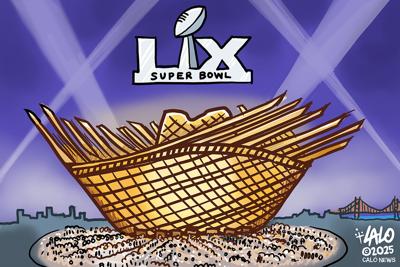
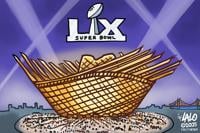

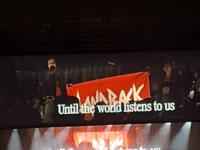

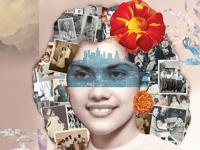


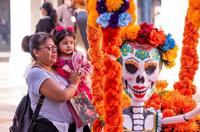
(0) comments
Welcome to the discussion.
Log In
Keep it Clean. Please avoid obscene, vulgar, lewd, racist or sexually-oriented language.
PLEASE TURN OFF YOUR CAPS LOCK.
Don't Threaten. Threats of harming another person will not be tolerated.
Be Truthful. Don't knowingly lie about anyone or anything.
Be Nice. No racism, sexism or any sort of -ism that is degrading to another person.
Be Proactive. Use the 'Report' link on each comment to let us know of abusive posts.
Share with Us. We'd love to hear eyewitness accounts, the history behind an article.